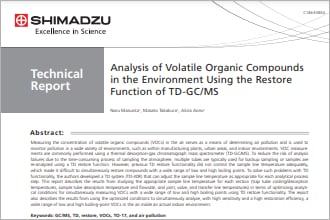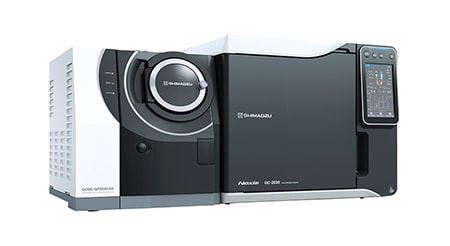Measuring the concentration of volatile organic compounds (VOCs) in the air serves as a means of determining air pollution and is used to monitor pollution in a wide variety of environments, such as within manufacturing plants, urban areas, and indoor environments. VOC measurements are commonly performed using a thermal desorption-gas chromatograph mass spectrometer (TD-GC/MS). To reduce the risk of analysis failures due to the time-consuming process of sampling the atmosphere, multiple tubes are typically used for backup sampling or samples are re-analyzed using a TD restore function. However, previous TD restore functionality did not control the sample line temperature adequately, which made it difficult to simultaneously restore compounds with a wide range of low and high boiling points. To solve such problems with TD functionality, the authors developed a TD system (TD-30R) that can adjust the sample line temperature as appropriate for each analytical process step. This report describes the results from studying the appropriate sample line temperature for each section (trap tube cooling/desorption temperatures, sample tube desorption temperature and flowrate, and joint, valve, and transfer line temperatures) in terms of optimizing analytical conditions for simultaneously measuring VOCs with a wide range of low and high boiling points using TD restore functionality. The report also describes the results from using the optimized conditions to simultaneously analyze, with high sensitivity and a high restoration efficiency, a wide range of low and high boiling-point VOCs in the air inside an actual indoor environment.






